#american motors
Text

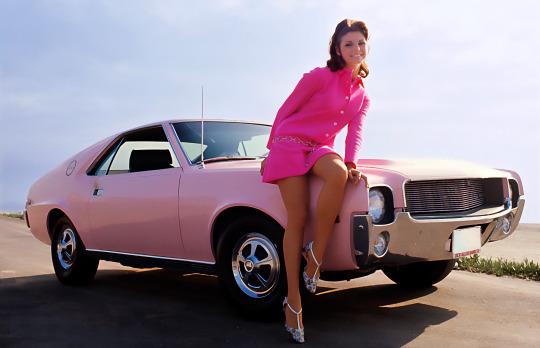
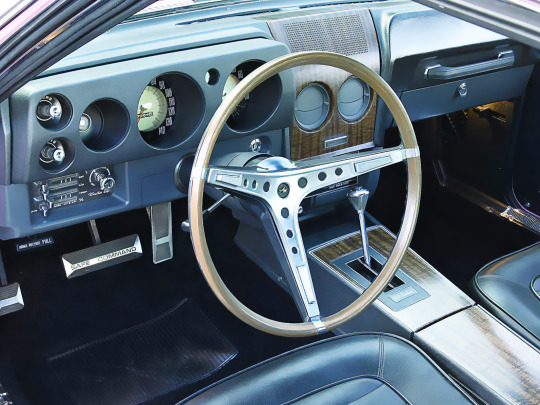
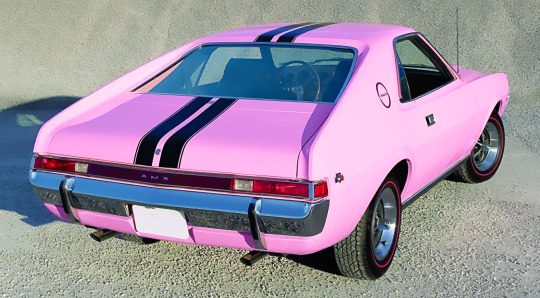
AMC AMX "Playmate Pink," 1968. Playmate of the year Angela Dorian received an AMX powered by the base 290ci AMC V8 as her prize. It was fitted with a number of factory options including air conditioning and an 8-track car stereo. American Motors offered the pink finish as a special order colour so in addition to Angela's car "a number" of pink AMX models left the Kenosha, Wisconsin factory.
#AMC#American Motors#AMC AMX#American Motors AMX#Playmate Pink#prize#special edition#pink cars#1968#1960s#Angela Dorian#2 seater
530 notes
·
View notes
Text


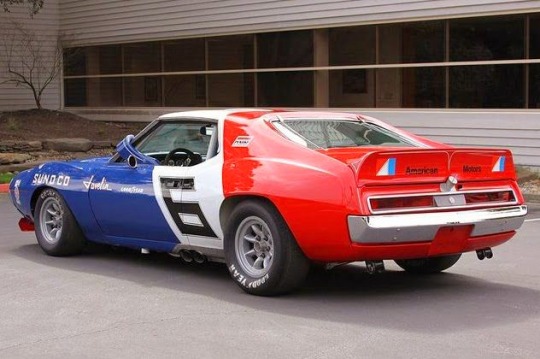


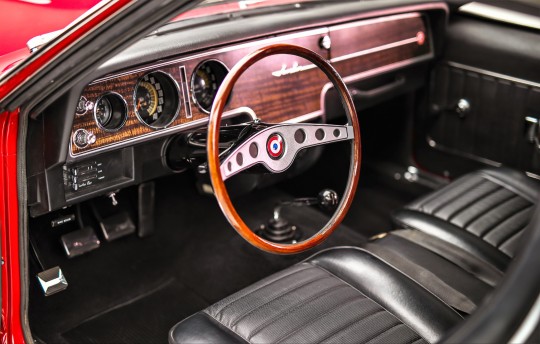
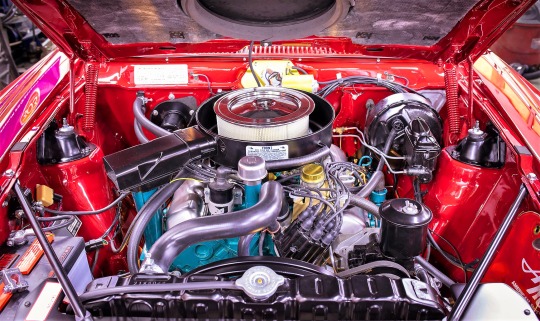
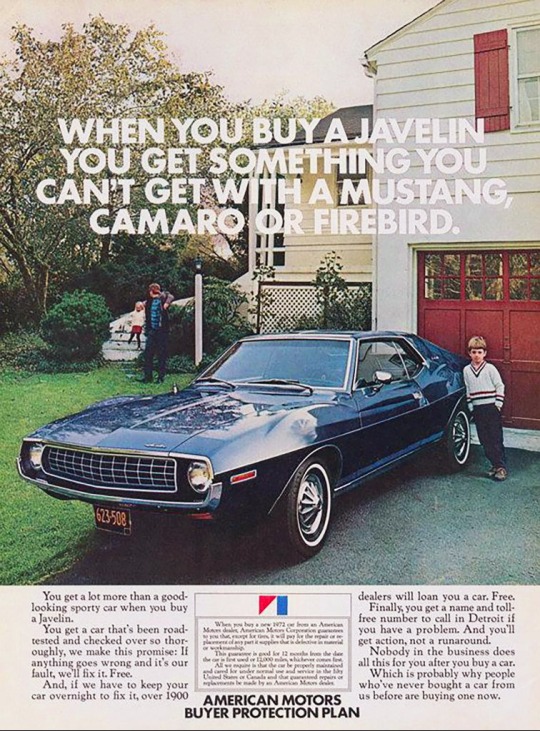
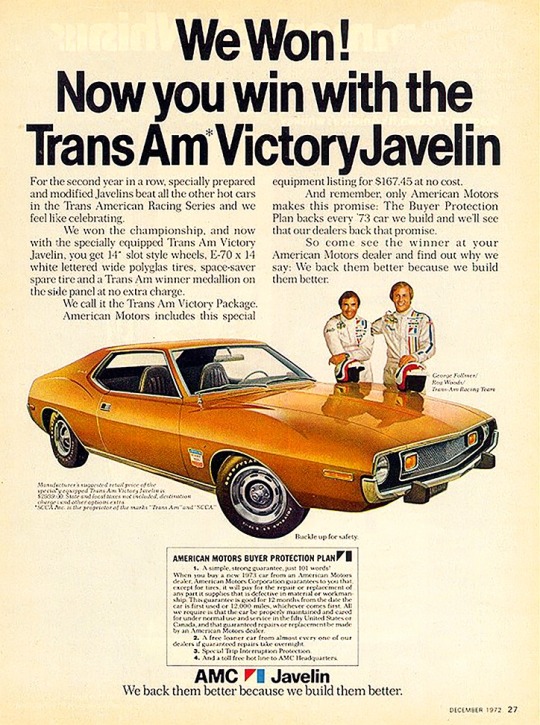

🇺🇲 Step back in time and experience the roar of the iconic AMC Javelin, a true legend of American muscle cars! Introduced in 1967 by American Motors Corporation (AMC), the Javelin was a front-engine, rear-wheel-drive, two-door hardtop automobile manufactured across two generations, spanning from 1968 through 1970 and then from 1971 through 1974 model years. It was designed to compete in the pony car market segment against rivals like the Ford Mustang and Chevrolet Camaro.
🚗💨 The AMC Javelin burst onto the scene in 1968, showcasing a sleek design and powerful engines. Styled by Dick Teague, the Javelin offered a range of trim and engine levels, from economical pony car variants to high-performance muscle car models. Its distinctive appearance, featuring a long hood and aggressive stance, turned heads on the streets and racetracks alike.
🏭 Besides being manufactured in Kenosha, Wisconsin, Javelins were also assembled under license in Germany, Mexico, the Philippines, Venezuela, and Australia, showcasing its global reach. American Motors even offered discounts to U.S. military personnel, leading to many Javelins being exported overseas.
🛞 Under the hood, the Javelin packed serious power. It was available with inline-six engines or potent V8s, delivering thrilling acceleration and speed. The AMX variant, equipped with a 6.4-liter V8, boasted over 300 horsepower!
🏆 The AMC Javelin wasn't just about looks—it excelled on the track too. It competed in Trans-Am racing, demonstrating its speed and agility. In fact, the second-generation AMX variant was the first pony car used as a standard vehicle for highway police car duties by an American law enforcement agency. Today, the Javelin's unique style and racing heritage make it a sought-after classic among collectors.
💔 By 1974, the automobile landscape had shifted. While other manufacturers downsized engines in response to changing market demands and fuel shortages, the Javelin's big engine option continued until production ceased in November 1974 amidst the Arab oil embargo and declining interest in high-performance vehicles.
🦅 The AMC Javelin embodies the spirit of American muscle cars, blending style, performance, and affordability. It's a timeless classic that continues to capture the hearts of car enthusiasts everywhere. Get ready to hit the road and experience the thrill of the AMC Javelin!
#brits and yanks on wheels#retro cars#transatlantic torque#vehicle#cars#old cars#brands#companies#automobile#american cars#amc#american motors#american muscle#amc javelin#javelin#muscle car#pony car#race car#trans am#old car#classic cars#car#american auto#automotive#chevrolet camaro#chrysler#wisconsin#kenosha#made in usa#ford mustang
170 notes
·
View notes
Text
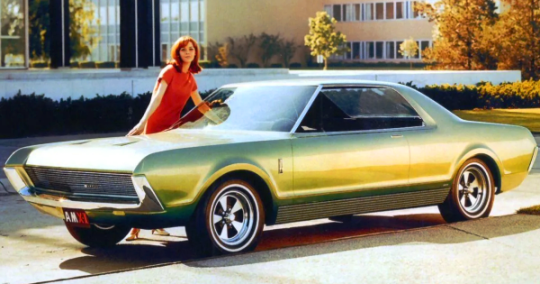
Outside the AMC Box: 1966 American Motors AMX II Concept
Posted on March 19, 2024 by MCG
To create the AMX II, AMC design chief Richard Teague reached outside his own styling studios and brought in independent designer and builder Vince Gardner.
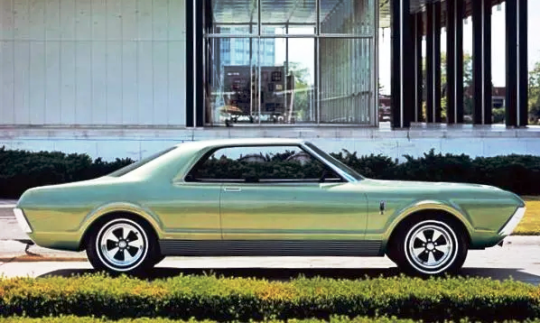
In his long tenure as vice president of design at American Motors from 1964 to 1983, Richard A. Teague earned a reputation for working outside the box. This constant drive to be different could be seen, for example, in the four Project IV concept vehicles his design staff prepared for a 1966 promotional tour, with displays in six major American cities. For one of the Project IV cars, the AMX II, Teague reached outside the box a little further and brought in an independent designer, Vincent E. Gardner.

Among car designers, Vince Gardner had a remarkable skill set. In addition to being a talented stylist, he was also a highly capable clay modeler and fabricator. As a kid fresh out of high school, he prepared the clay model for the 1936 Cord 810, working alongside designer Gordon A. Buehrig. His own design credits include the 1947 Gardner Special, the 1953 Vega sports car, and the 1964 Mustang III, while the 1962 Thunderbird Italien and 1968 Dodge Charger III are among the concept vehicles he constructed for the automakers.
While the AMX II was Gardner’s creation, it didn’t look at all out of place among the other three Project IV concept vehicles, integrating nicely. (See our feature on the Project IV Cavalier here.) According to the American Motors press materials, the AMX II was intended to expand on the theme of the AMX sports car concept, which made its public debut in the Project IV program
Eight inches longer than the AMX, the AMX II included room for four passengers and a generous trunk. (AMX stood for American Motors eXperimental.) Though it almost doesn’t look it, the wheelbase was a full 110 inches, with a shape that could remind you of the 1967 Mercury Cougar, though it’s slimmer, less chunky.

Features included hidden headlamps and windshield wipers, while an automated circuit locked the doors when the AMX II was moving. At the rear was was a safety tail lamp arrangement with green, yellow, and red segments for driving, slowing, and braking. However, it seems many of these features probably existed only on paper.
Like the other Project IV cars, the AMX was not a running vehicle, but merely a fiberglass studio glider with no drivetrain or running gear. There was no real interior, either, only a black sillhouette panel inside, just under the beltline, to fill the cabin volume. Like so many pushmobile show cars, the AMX II served no real function once its display career was concluded, so it was more than likely scrapped soon after.

41 notes
·
View notes
Text

1979 American Motors Concord
#1979#american motors#concord#car#automobile#automotive#vintageadsmakemehappy#vintage magazine#vintage advertising#magazine#advertising#70s#1970s#driving
33 notes
·
View notes
Text

13 notes
·
View notes
Photo

1977 CHEVROLET MONTE CARLO
#1977#CHEVROLET#CHEVY#MONTE CARLO#CLASSIC US CARS#VINTAGE CARS#CLASSIC CARS#VETERANBIL#RAGGARBIL#AMERICAN MOTORS#CARSPOTTING
210 notes
·
View notes
Text

1966
10 notes
·
View notes
Text
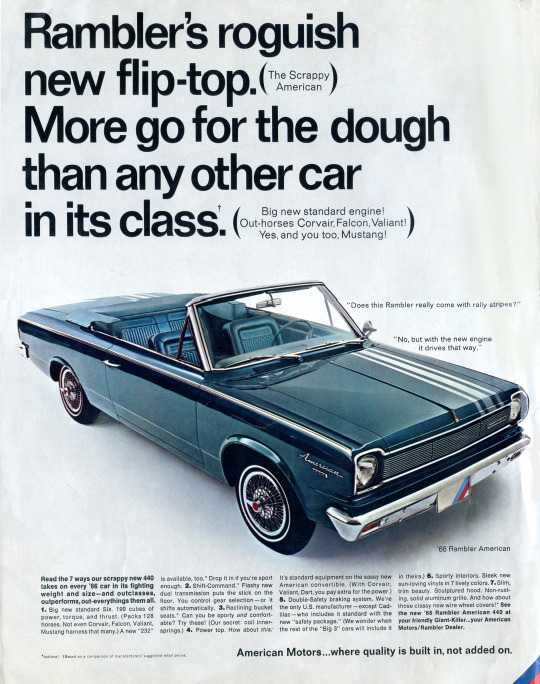
Back in the day I would have scoffed at this but now it's I see it as one damn fine looking car.
Look November 16th 1965
#vintage ad#advertising#vintage ads#advertisment#1965#american motors#amc#automotive#car ad#1960s#1960s cars#1960s ad#1960's#1960's ad#1960's cars#funny#humor#humour
18 notes
·
View notes
Photo
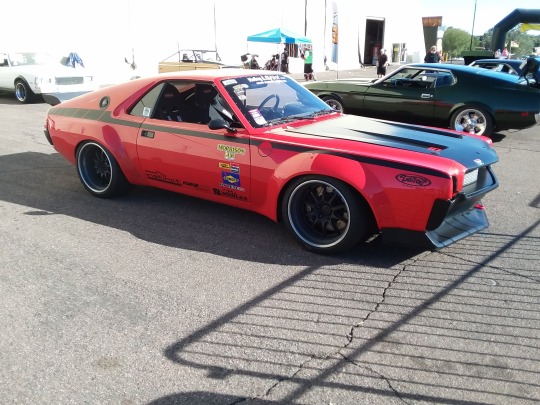

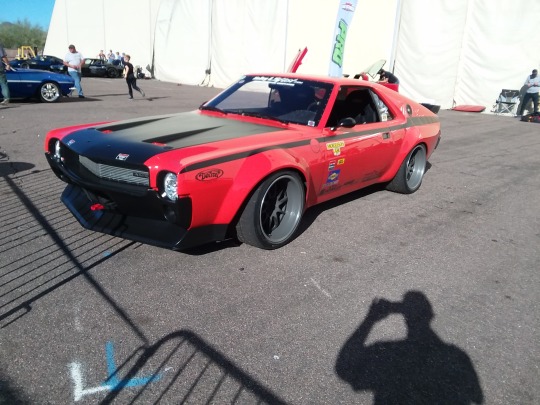
Wild heavily modified AMX in the winner’s circle area, spotted at the Goodguys Spring Nationals in Phoenix, AZ, March 2019. Wow!
99 notes
·
View notes
Text
just remember the time AMC won the fucking Winston Cup in Nascar in 1973. In a fucking Matador.

I can imagine the meeting with Roger Penske and Mark Donahue.
AMC: “listen, can we get Mr. Penske on the phone?We wanna enter nascar.”
Penske: “should we build something like the Trans Am cars? The Javelin? It’s a proper sports car. It already won the series in ‘71 and 72. It’ll be great against the chargers and Torinos. AMC: “ok, so you know the Matador?” Donahue: “the cop cars?” AMC: “yes. That’s exactly what we want. It’s gonna be great for our sporty racing image. We wanna race are boxiest and most unaerodynamic car in our lineup…”
7 notes
·
View notes
Text



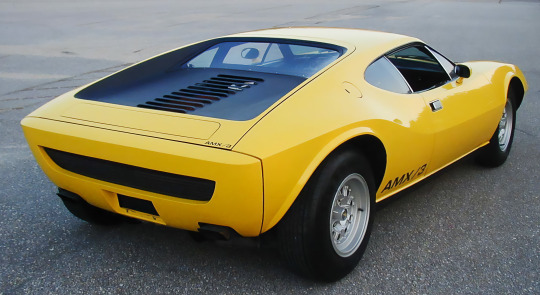
American Motors AMX/3, 1970, by Italdesign. The AMX/2 was well received despite lacking an engine so AMC followed it with a fully operational mid-engined prototype powered by American Motor's 6.4 litre V8. Giotto Bizzarrini was involved in the car's development, the suspension and mid-engine chassis. What was not acknowledged at the time was that the styling was by Italdesign. The plan had been for the car to be made by German coachbuilder's Karmann and exported to the US to compete with the De Tomaso Pantera. However soon after the AMX/3 was presented the program was cancelled.
#American Motors#AMC#American Motors AMX/3#AMC AMX/3#concept#prototype#Italdesign#Giotto Bizzarrini#mid-engine#V8#1970#Sports car#dead brands
445 notes
·
View notes
Text
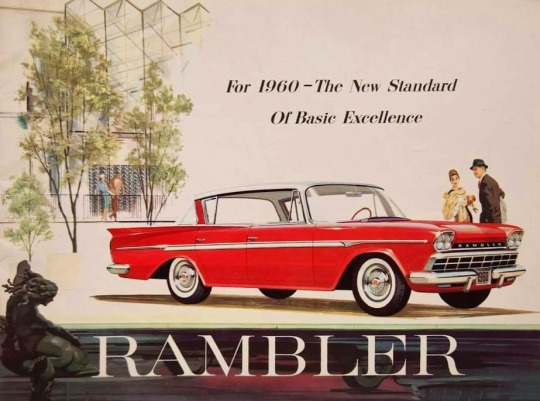
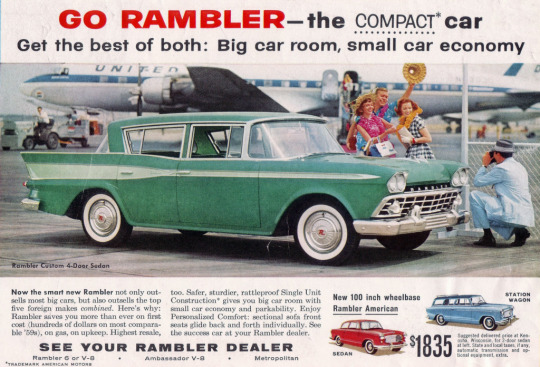

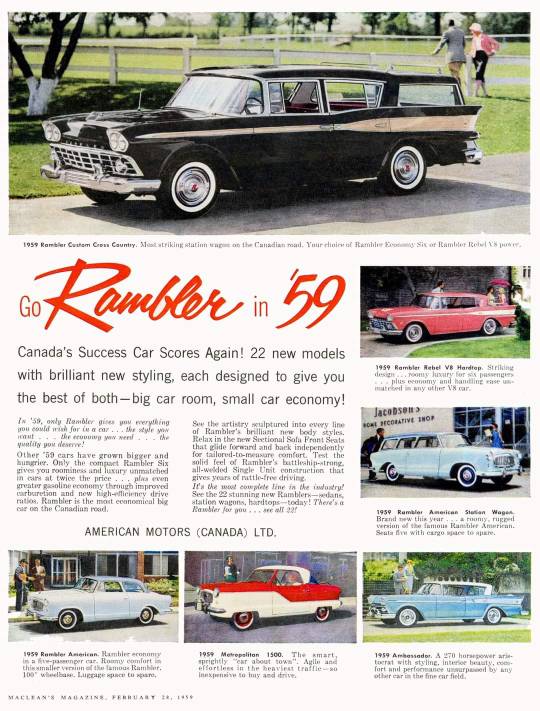
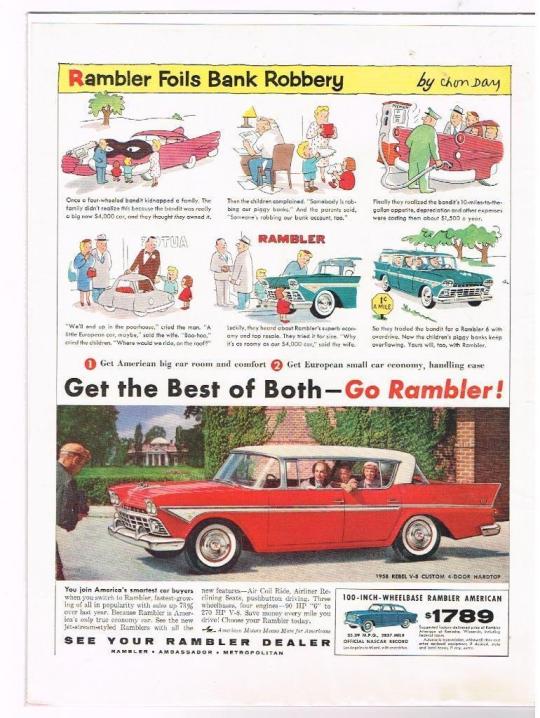


🇺🇲 The Rambler Six and Rambler V8, produced by American Motors Corporation (AMC) from 1956 to 1960, revolutionized the automotive landscape with their groundbreaking advertisements.
💰 Despite a brief sales setback, the 1958 Rambler model witnessed an extraordinary resurgence, with sales soaring to 119,000 units. Building on this success, the 1959 lineup saw notable enhancements, including a redesigned grille, enhanced brakes for V8 models, fuel efficiency optimizations, and the introduction of electric overdrive and pushbutton automatic transmission.
🛞 Comprising 11 models with optional features such as air conditioning and adjustable seats, the Rambler lineup garnered acclaim for its affordability and craftsmanship, securing a commendable sixth position in the fiercely competitive U.S. market.
🚘 Often hailed as the "Kenosha Cadillac," Rambler cars were predominantly manufactured in Kenosha, Wisconsin. Notably, one such vehicle belonged to Andy Anderson, the father of Louis Anderson, immortalized in the beloved animated series "Life with Louie" (1994 - 1998).
#Transatlantic Torque#Brits and Yanks on Wheels#american cars#made in usa#made in america#cars#retro cars#old cars#vehicle#brands#rambler#amc#american motors#automobile#innovation#car#1950s#1950s cars#history#wisconsin#kenosha#life with louie#louie anderson#kenosha cadillac#advertising#commercial#rambler six#rambler v8#fox kids#corporations
17 notes
·
View notes
Text
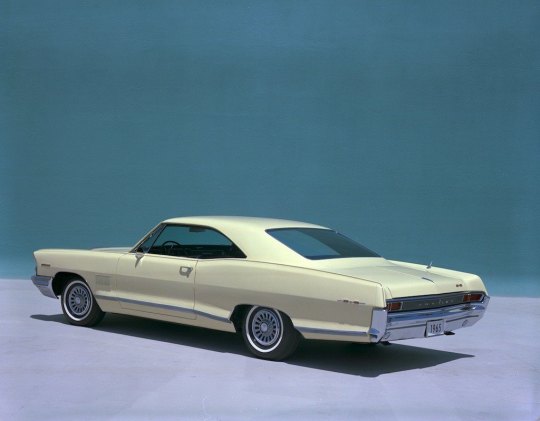
10 Forgotten Muscle Cars That Deserve to Be Restored
by James Derek Sapienza
Source: General Motors
We all know the story; it started in 1964 with the Ford Mustang. No, wait — I mean the Plymouth Barracuda. Or the Pontiac GTO. Or was it earlier with the Pontiac Catalina SD? The ’50s Dodge D-500 maybe?
Debating the origin of the muscle car is like debating over the first rock and roll record; everyone you talk to has a different opinion, and no one is exactly wrong. Let’s just say that by the early ’60s, a generation coming of age fell in love with high-performance midsize cars coming out of Detroit, and for a few brief years, performance ruled the day. Naturally, the good old days seem to look better with each passing year, and as the book was written on the muscle car, a fair amount of contenders fell by the wayside.

1. 1964 Studebaker Avanti R3
Source: Auctions America
The Avanti isn’t generally counted among muscle cars, but then, Studebaker was never exactly considered a performance powerhouse to begin with. But the fiberglass Avanti had a long hood, short rear deck, and 289-cubic-inch V8 a full two years before the Ford Mustang did. In 1964 (after production officially ended), Studebaker bored out nine V8s to 304 cubic inches, slapped a Paxton supercharger on them, and dropped them into remaining Avantis. The result was a 171-mile-per-hour rocket, which the company claimed made it the fastest production car in America. This R3 was sold by Auctions America in 2010 for $96,250. With the collector market being what it is today, good luck finding one this cheap ever again.
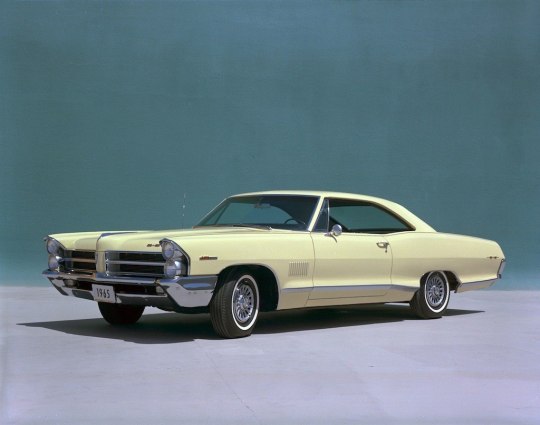
2. 1965 Pontiac 2+2
Source: General Motors
As far as classic muscle cars go, the ’65-’67 GTO is remembered to be about as big as they came. But with the success of the GTO, Pontiac wanted to take its go-fast formula to an even bigger car, which became the ’65-’67 2+2. Based on the full-size Catalina two-door, the 2+2 had its own unique 338-horsepower 421-cubic-inch V8, and in High Output guise, power jumped to 376 ponies, which when tuned right could rocket from zero to 60 in a mind-bending 3.9 seconds. Bigger, plusher, and often faster than its smaller stablemate, the 2+2 deserves a lot more love from speed freaks.

3. 1964 Mercury Comet Cyclone
Source: Ford
For ’60s Ford products, the Mercury Comet was about as basic as they came. Closely based on the Ford Falcon, the ’64-’65 Comet could be livened up with Ford’s famous 289-cubic-inch V8. But for those who wanted more from their Mercurys, Ford built 50 Comet Cyclones for the dragstrip, complete with fiberglass hood, fenders, doors and front bumper, plexiglass windows, and the same 425-horsepower 427 V8 found in the Shelby Cobra. In ’66, Mercury introduced the production Comet GT with the 390 V8, and while they’re capable compact muscle cars, they couldn’t hope to match the insanity of their big block predecessor.

4. 1968 Ford Ranchero 500
Source: Ford
It’s been long overshadowed by Chevy’s iconic El Camino, but the Ford Ranchero was America’s first car-based Ute. And while Chevy was offering the 396 V8 in its muscle trucks, Ford upped the ante in ’68 and made its restyled Ranchero available with a 335-horsepower Cobra Jet 428 V8. Unfortunately, a lack of weight over the rear wheels made the hot Rancheros a handful to drive, so very few were built with Ford’s biggest motor. While it seems like every surviving El Camino happens to be an SS model, we can’t remember the last time we’ve seen a Cobra Jet Ranchero. Come to think of it, we can’t remember the last time we’ve seen any Ranchero.

5. 1969 Chevy Kingswood 427
Source: General Motors
Back in the ’60s, you could order virtually any option you wanted on a car, and companies would actually build it for you. So imagine you’ve got a growing family, and your Corvette just can’t handle them. What to do? Buy a Chevy Kingswood station wagon with Rally wheels, hideaway headlights, seating for seven, and the same 390-horsepower V8 found in your ‘Vette. Only 546 buyers opted for the big V8 in ’69, but a number of 427 Kingswoods spent the next decade making their mark on the drag strip.
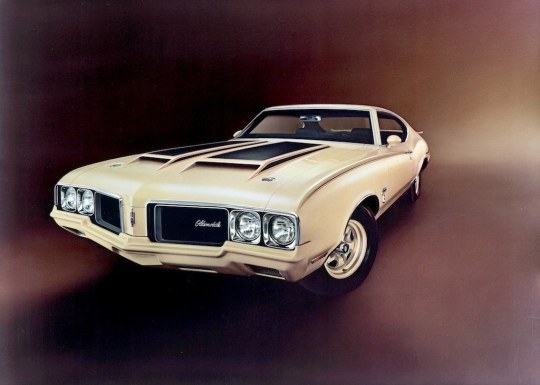
6. 1969 Oldsmobile Rallye 350
Source: General Motors
When gearheads think of outrageous muscle cars from 1969, the Pontiac GTO Judge easily sits at the top of the list. But while the Judge has gone on to become a legend, Oldsmobile’s analog, the Rallye 350, is all but forgotten. Like the Judge (at least at first) it was offered in one outrageous color (Sebring Yellow), had color-matched wheels and bumpers, a spoiler, and a fiberglass hood. And compared to Olds’s top-dog 442, the car’s 310-horsepower 350-cubic-inch V8 made it significantly lighter, allowing it to scramble from zero to 60 in seven seconds and run the quarter mile in a respectable 15.27 seconds at 97 miles per hour. Just 3,500 Rallye 350s were built, making it one of the more obscure muscle cars to ever come from GM.
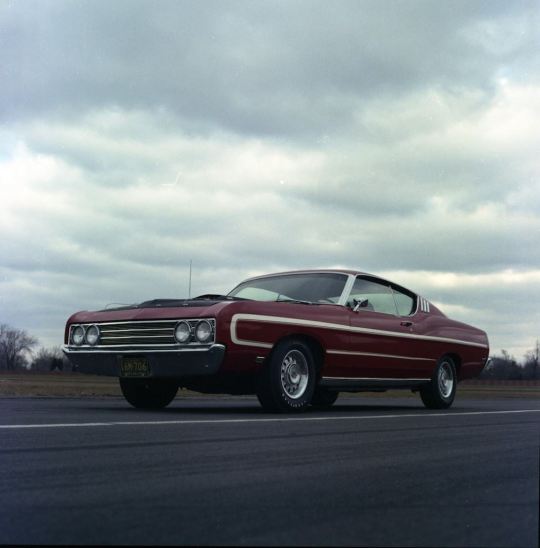
7. 1969 Ford Torino Talladega
Source: Ford
Half a century on, the Plymouth Roadrunner Superbird and Dodge Daytona get all the love when it comes to NASCAR homologation specials. But in 1969, Ford tried its hand at aerodynamics too and built the Torino Talladega. Starting with a Torino Sportsroof, Ford worked with the Holman-Moody race shop to design a sleeker, longer front clip and rear fascia for the car. The Talladega was honed in the wind tunnel — a relative novelty for the era — and powered by the 429-cubic-inch V8 found in the Boss Mustang. Production was over by March; Ford only built 754 of them and they were barely advertised, but the slippery cars dominated during the ’69 season, winning 29 races. In 1970, however, the 200-mile-per-hour Superbird ruled NASCAR, and the Talladega’s time in the spotlight was over. Today, the Talladega (and near-identical Mercury Cyclone Spoiler II) are bargains on the collector market compared to the beak-nosed Mopars.
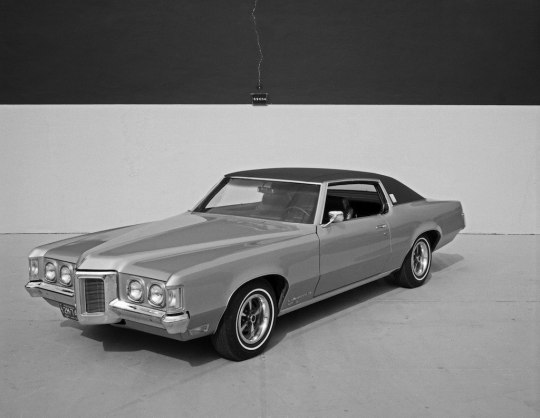
8. 1969 Pontiac Grand Prix SJ
Source: General Motors
The second-generation Grand Prix is largely remembered for its role in popularizing the Personal Luxury Coupe segment, but in its early days, it was one of the hottest cars on the street. With a long hood (the longest hood of any production car in ’69, in fact) and short deck, the Grand Prix was available with Pontiac’s 390-horsepower 428-cubic-inch V8, allowing it to scramble from zero to 60 in 6.5 seconds and run the quarter mile in 15 seconds at 97 miles per hour. Its combination of luxury and power made it the Grand Prix massive hit for Pontiac; within a few years, any semblance of performance would be gone.
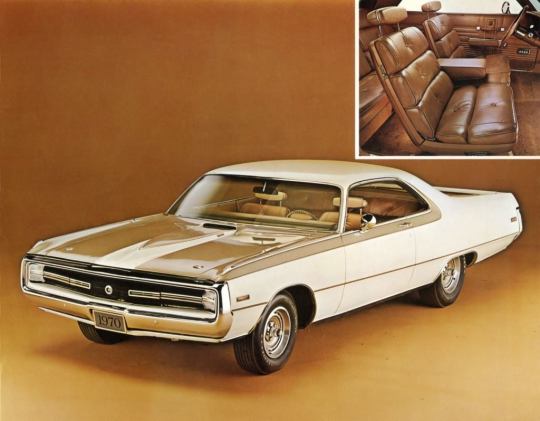
9. 1970 Chrysler Hurst 300
Source: Fiat Chrysler Automobiles
As early as 1970, Chrysler die-hards were feeling nostalgic for the 300-letter series, which ended in 1965. The 300-series carried on, but performance had taken a back seat as mid-sized muscle cars had picked up the go-fast mantle. Chrysler tried to recapture the magic for ’70 by outfitting a 300 coupe with the interior from an Imperial, a fiberglass hood and decklid, a 375-horsepower 440-cubic-inch V8, and a Torque-Flite automatic to handle all that power. At 18.5 feet long and 4,400 pounds, the big Chrysler could still make zero to 60 in 7.1 seconds and run the quarter mile in 15.3 seconds. With just 500 built, the Hurst 300s rank as one of the rarest Mopar muscle cars of all time.
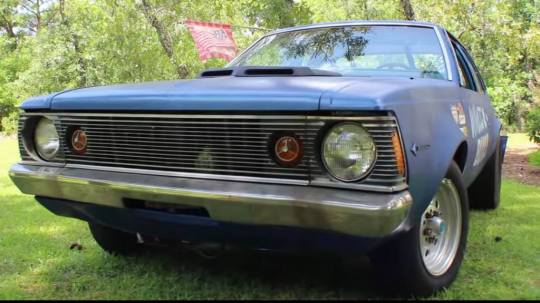
10. 1971 AMC SC/360 Hornet
Source: Chris Andrews Productions via YouTube
In the ’60s, AMC’s red, white, and blue Rebel Machine and SC/Rambler muscle cars failed to move the sales needle for America’s last independent automaker, but they sure caused a scene wherever they went. For 1970, the company had introduced the compact Hornet and Gremlin to replace the Rambler, and with them came the SC/360 Hornet. With an available 285-horsepower 360-cubic-inch V8 under the hood, the small Hornet could hit 60 from a standstill in 6.7 seconds, and run the quarter mile in 14.9 seconds at 97 miles per hour. But in 1970, displacement still ruled the day, and despite being cheaper than a Plymouth Duster 340, AMC found just 784 buyers for its smallest muscle car. We think it’s aged remarkably well, and would love to take one of these ’70s-era sleepers to the drag strip.
#car#cars#muscle car#mopar#american muscle#dodge#ford#chevrolet#chevy#amc#american motors#pontiac#pontiac grand prix#chrysler#hurst#olds#oldsmobile#studebaker#automobile#auto#coupe#Mercury
184 notes
·
View notes
Text

67 notes
·
View notes

